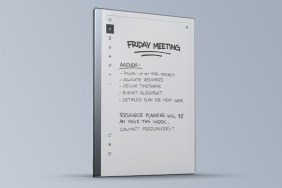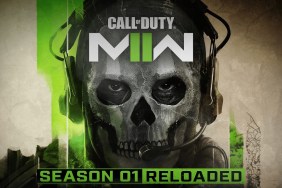The Emperor’s new clothes.
The Medieval world was an especially dangerous place. The average life expectancy was just over 30 years old. Babies, assuming that they and their mother both survived childbirth, had a 50% chance of dying before they reached age 10. Disease and famine were rampant, and medical “cures” were often worse than the condition. That’s all assuming you didn’t get the black plague.
Set against that backdrop, war was a fairly safe activity, at least for the wealthy. It got you out of the disease ridden cities, and as a fairly indestructible armored tank in your plate mail, everyone wanted to capture you, not kill you, because you were worth big money – a king’s ransom as they say, or at least a Duke’s.
[image1]So it’s no wonder we glorify Medieval life in movies, theme parks, restaurants, and books. Some people, like my brother-in-law, crave the fantasy so badly that they dress the part and run around hitting each other with padded (and occasionally unpadded) swords. No, really.
And even though I myself do not own a suit of chain mail, I cannot resist the lure of Medieval II: Total War. The authentic scenarios, huge armies, epic battles, and deep strategy we’ve come to expect from the Total War series all return in a thunderous, mailed charge.
The year is 1080 and the western world has descended into fractured powers and chaos. The Byzantine Empire, the only true remnant of the Roman Empire, is declining into insignificance. The Kaiser and the Vatican are feuding over power and the Holy Roman Emperor cannot maintain control of territories that are technically in his realm. It is a time when an enterprising leader could rewrite history and found a dynasty to unite the known world.
If Medieval II: Total War sounds epic in scope, that’s because it is. Essentially two fully complete strategy games in one, you’ll take a faction out of the dark ages, through the discovery of gunpowder, and even to the exploration of the new world, providing you with the chance to bring the Aztec lands into your empire, Cortez style. Just playing through the free-form campaign once, as one of the game’s twenty-or-so factions, can be a 60 hour experience.
If you’ve played Rome: Total War, you should be familiar with the experience. The map of the Mediterranean and surrounding areas is the focus of the turn-based half of the game (think Sid Meier’s Civilization). Here you build your cities, manage your family members, armies, priests, spies, assassins and merchants. Every single one of these people has a name, and a ton of individual characteristics, from Social Drinker to Dangerously Mad. And all these characteristics have in game effects, like increasing the morale of your troops, to making people simply terrified of you. I noticed one of my priests that had been promoted to a Cardinal was actually a woman masquerading as a man, which increased her devotion to God, but also increased the likelihood of her being exposed as a heretic.
[image2]In fact, all the non-army units have a greater effect in Medieval II than in Rome. Spies and assassins are pretty much the same, but now skilled merchants can perform a hostile takeover of another merchant’s business. Priests can be used to spread your faith to distant lands, silence heretics, and burn witches if they weigh the same as a duck.
Religious politics don’t stop there either, because the Pope is an important player, and having him on your side is worth it’s weight in gold, as he alone has the ability to excommunicate factions, or declare a crusade against a distant city. When the pope dies, there’s a great deal of political wrangling to be done in the College of Cardinals surrounding the selection of the new pope.
However, when diplomacy fails, it’s the politics of steel that rule the day, and when your armies enter a battle, be it out in the field or an assault upon city walls, the game zooms in to its real-time strategy half. Here, huge impressive armies march thunderously, and you can literally have thousands of soldiers on a single battlefield. It’s a game of tactics, because you only have the armies and equipment you bring with you – you can’t mine some more Medievalite and magically pop more archers out of the archer hut.
This is also where the game is at it’s more impressive to behold. Crossbowmen rain down arrows on the enemy, while catapults lob huge, flaming balls, and bodies go flying trying to withstand the charge of cavalry. The game uses an updated version of the Rome engine, which comes with some graphical improvements, at the cost of steeper system requirements.
[image3]The orchestral soundtrack is just as good as ever, although by the end of a 60 hour campaign, you’ll know all the music by heart and would be better off switching to some tunes of your own. All the factions are voiced with appropriately funny accents and comments for all the unit types.
Finish that campaign, and there’s a host of other options. There are real, historical battles you can fight for yourself, and tools to create your own scenarios, real or not. The multiplayer game supports up to eight people, and if you ask me, the city sieges are still the best online conflicts. I am still disappointed, however, that you can only play individual battles online and that the awesome campaign map is strictly for the solo player.
Speaking of which, the developers also didn’t take the opportunity to fix some of Rome’s flaws, dooming us to repeat their mistakes throughout history. Units on the battlefield have some definite A.I. problems now and then, especially when storming or defending city walls. And naval combat simply doesn’t exist except on the turn-based map where combat is resolved just by clicking a button. In a game that’s based around the Mediterranean Sea, that’s just not right.
However, despite some missed opportunities, Medieval II: Total War is still, hands-down, the best strategy game you can buy today. The scope is epic, the battles look legendary, and the increased use of non-military units and the smart incorporation of the politics of religion are welcome additions. And while I still won’t be wearing a hauberk to work, I have decided to take up at least one Medieval pastime – it turns out the river water in the cities was so contaminated back then, people (even children) drank beer all day long instead. Now there’s a battle plan I can get behind. Huzzah!
-
Two games in one
-
Deep strategy
-
Smart use of religion
-
Awesome looking, huge battles
-
Some A.I. problems
-
Still no naval combat











